Why Your Dog’s Achey Joints Are Begging for Massage Therapy (It’s Not What Vets Usually Recommend First)
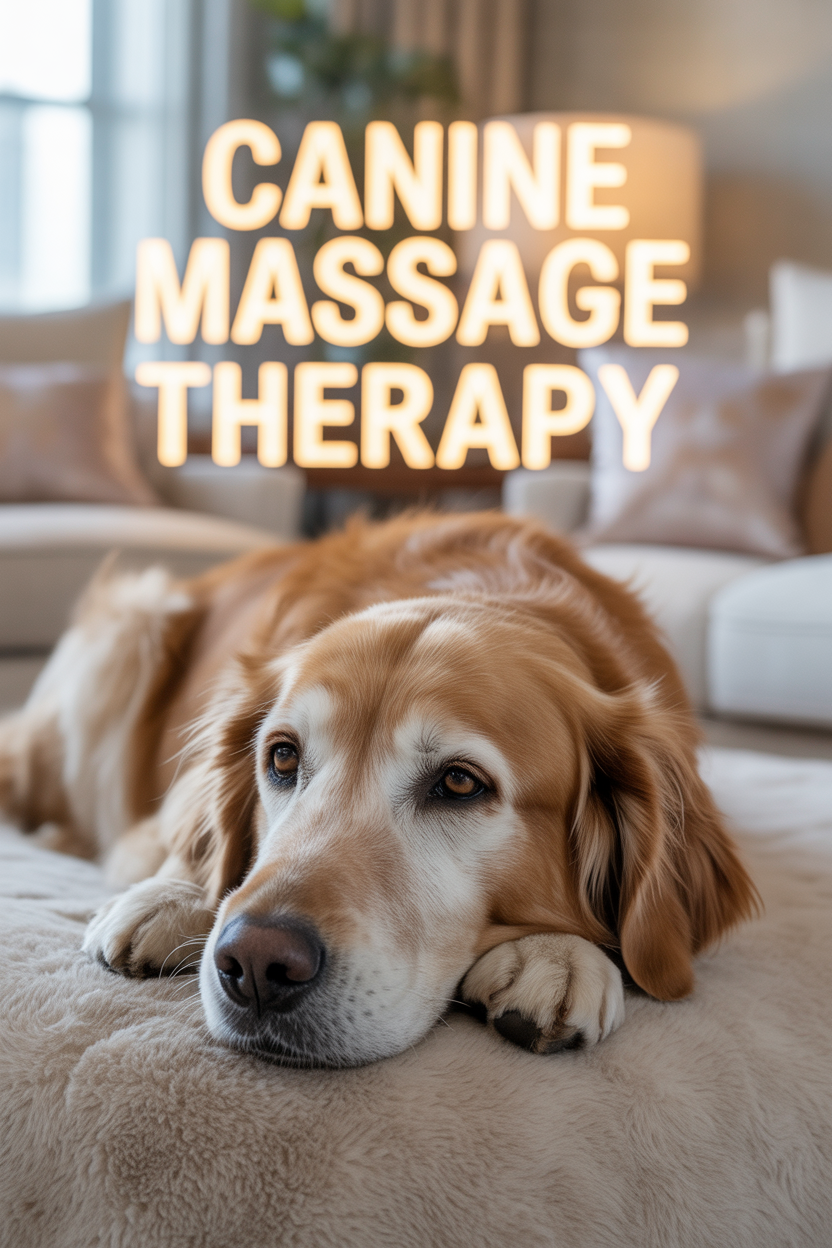
What Makes Canine Pain So Challenging and When Should You Consider Massage Therapy?
Picture this: your furry buddy, who used to bounce around like a tennis ball on espresso, now moves like they’re auditioning for a slow-motion movie scene. If this sounds familiar, massage therapy for pain relief might just be the gentle magic your dog needs!
Whether your four-legged family member is wrestling with arthritis, dealing with muscle stiffness that makes them grumpier than a cat in a rainstorm, or simply feeling the aches that come with their golden years, therapeutic touch can provide remarkable relief for their daily comfort. Therapeutic massage addresses multiple pain sources simultaneously, making it an invaluable tool for canine wellness.
Sharp-eyed dog parents often spot the telltale signs early – morning stiffness that makes your dog look like they’re 100 years old, limping that wasn’t there yesterday, or suddenly treating stairs like they’re Mount Everest. Getting those early vet checkups is like catching a problem before it turns into a full-blown drama.
When you jump on pain management quickly, massage therapy becomes way more effective at providing lasting relief. Early intervention prevents minor discomfort from developing into chronic conditions that significantly impact your dog’s quality of life.
The Hidden Epidemic: Why Arthritis and Joint Issues Strike So Many Dogs
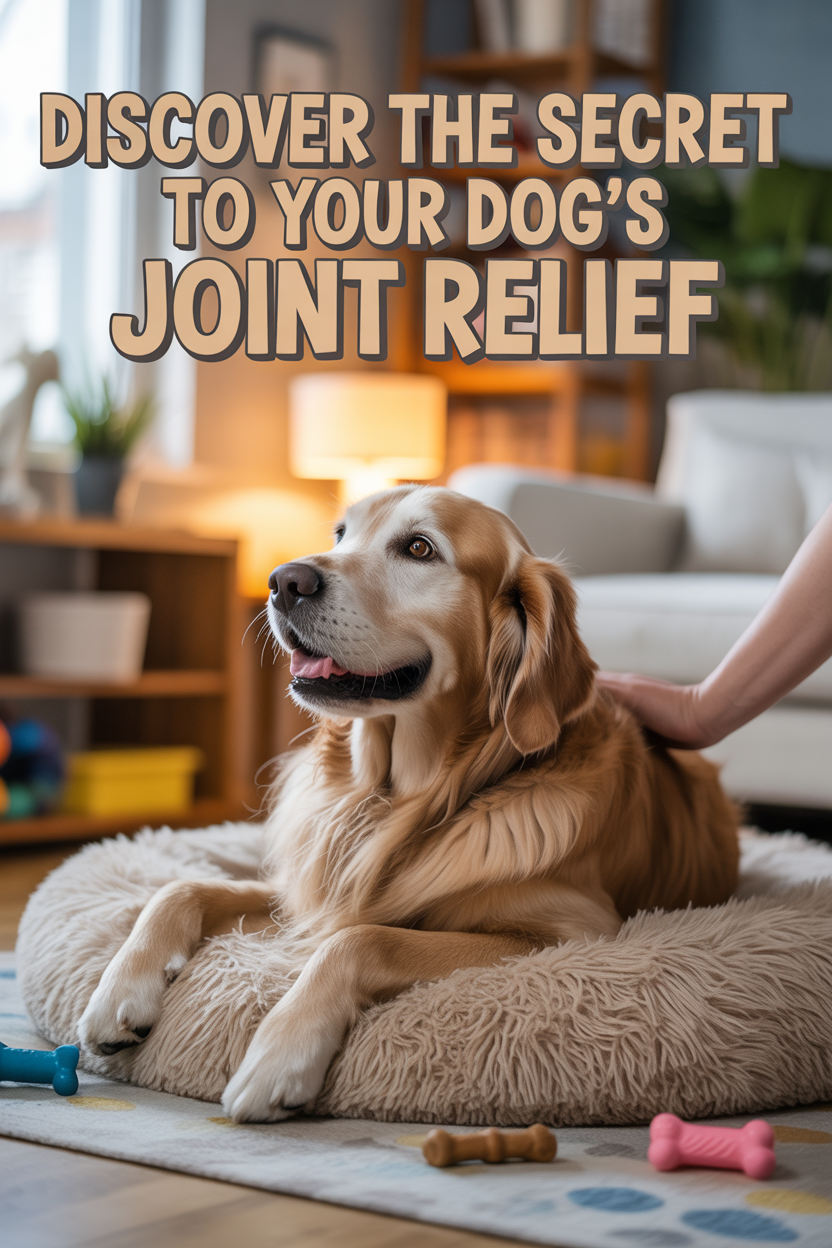
Here’s the not-so-fun fact: arthritis crashes the party for millions of dogs, bringing uninvited guests like joint pain and the kind of stiffness that makes your pup look like they’re doing robot impressions. This sneaky condition affects dogs of all ages, though it becomes increasingly common as our furry friends enter their golden years.
Arthritis can pop up thanks to genetics (thanks, Mom and Dad!), old injuries from their wilder puppy days, or carrying extra weight that puts their joints through more stress than a college student during finals week. Certain breeds like German Shepherds, Labrador Retrievers, and Golden Retrievers have genetic predispositions to joint issues.
Here’s a wake-up call: veterinary experts are practically shouting from the rooftops that extra pounds significantly bump up arthritis risk by turning those poor joints into overworked construction workers. Those rough-and-tumble play sessions or “oops” moments from the past can damage cartilage and create long-term ouches.
Keep your eyes peeled for red flags like your dog doing the “getting up is hard to do” dance, suddenly finding their daily walks about as appealing as a root canal, or hesitating during activities that used to make their tail helicopter with joy. These early warning signs indicate when massage therapy pain relief for dogs becomes most beneficial.
How Does Massage Therapy Actually Relieve Pain in Dogs?
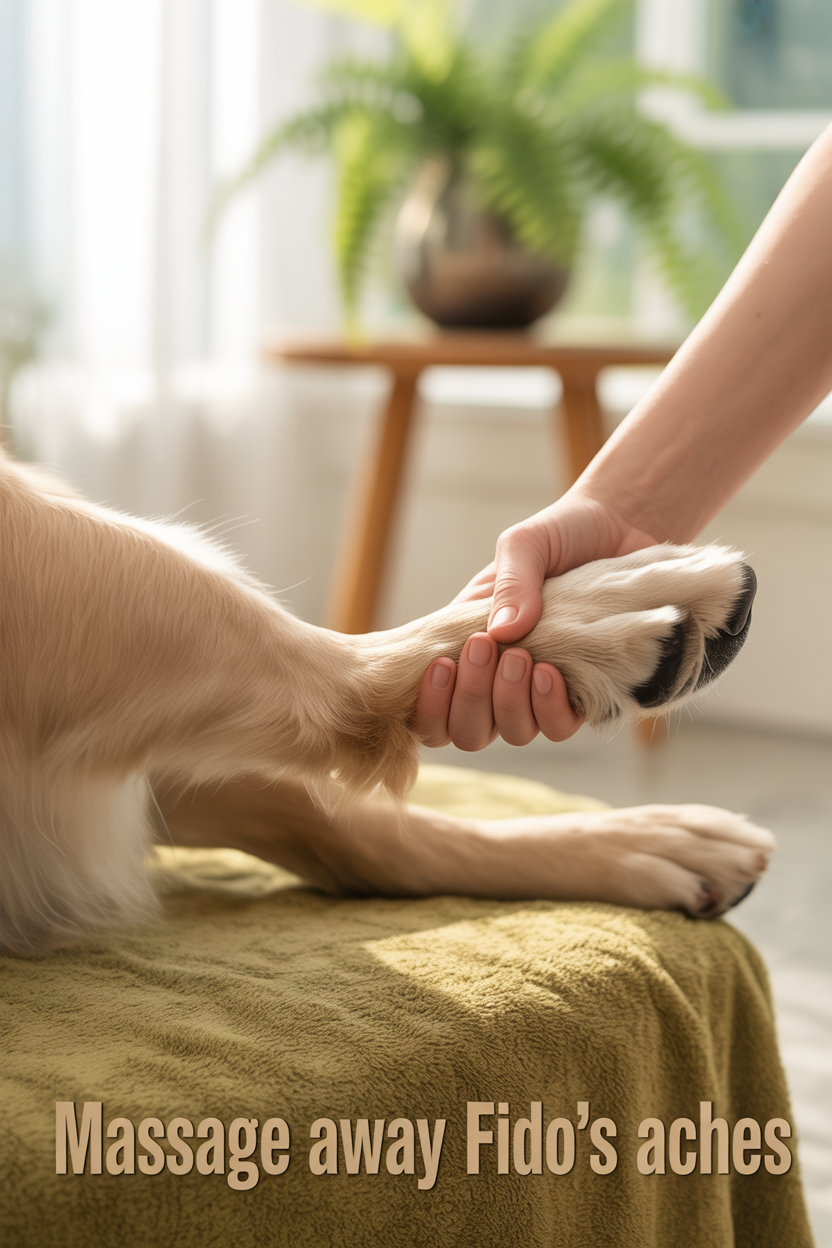
Get ready for some seriously cool science that’ll make you want to high-five a veterinarian! Therapeutic massage is like having a superhero cape for pain relief – it swoops in and tackles multiple types of discomfort all at once.
Those gentle massage techniques are basically whispering “chill out” to tense muscles while playing traffic controller to boost blood circulation to stiff, cranky joints. When a skilled therapist applies strategic pressure, they’re essentially playing demolition crew on restrictive scar tissue.
This enhanced circulation gives your dog the freedom to move like they’re dancing instead of trudging through molasses. The improved blood flow delivers essential nutrients to damaged tissues while carrying away inflammatory waste products that contribute to pain and stiffness.
Clinical studies are practically jumping up and down with excitement showing that regular massage therapy sessions can significantly dial down inflammation levels – which is basically like turning down the volume on arthritic conditions. The enhanced circulation from professional massage gives your dog’s natural healing processes a shot of espresso.
What Does the Research Say About Canine Massage Therapy?

Hold onto your leash because the research backing massage therapy for dog pain relief is seriously impressive! A comprehensive study involving 527 dogs demonstrated measurable improvements in pain levels and mobility following regular massage sessions.
Pet parents were practically writing love letters about better sleep patterns and easier movement after jumping on the consistent therapeutic massage bandwagon. Dogs dealing with hip dysplasia, spinal issues, or arthritis showed improvements so notable that their humans probably wanted to throw a celebration party!
The really exciting part? Scientific evidence confirms that massage therapy plays beautifully with other treatments like laser therapy, acupuncture, or joint support supplements – think of it as the ultimate wellness team-up.
This research is basically giving massage therapy a giant gold star as a legitimate, evidence-based way to manage canine pain naturally. Multiple veterinary journals now recognize therapeutic massage as an essential component of comprehensive pain management protocols for dogs.
How Can You Tell When Your Dog Needs Massage Therapy?
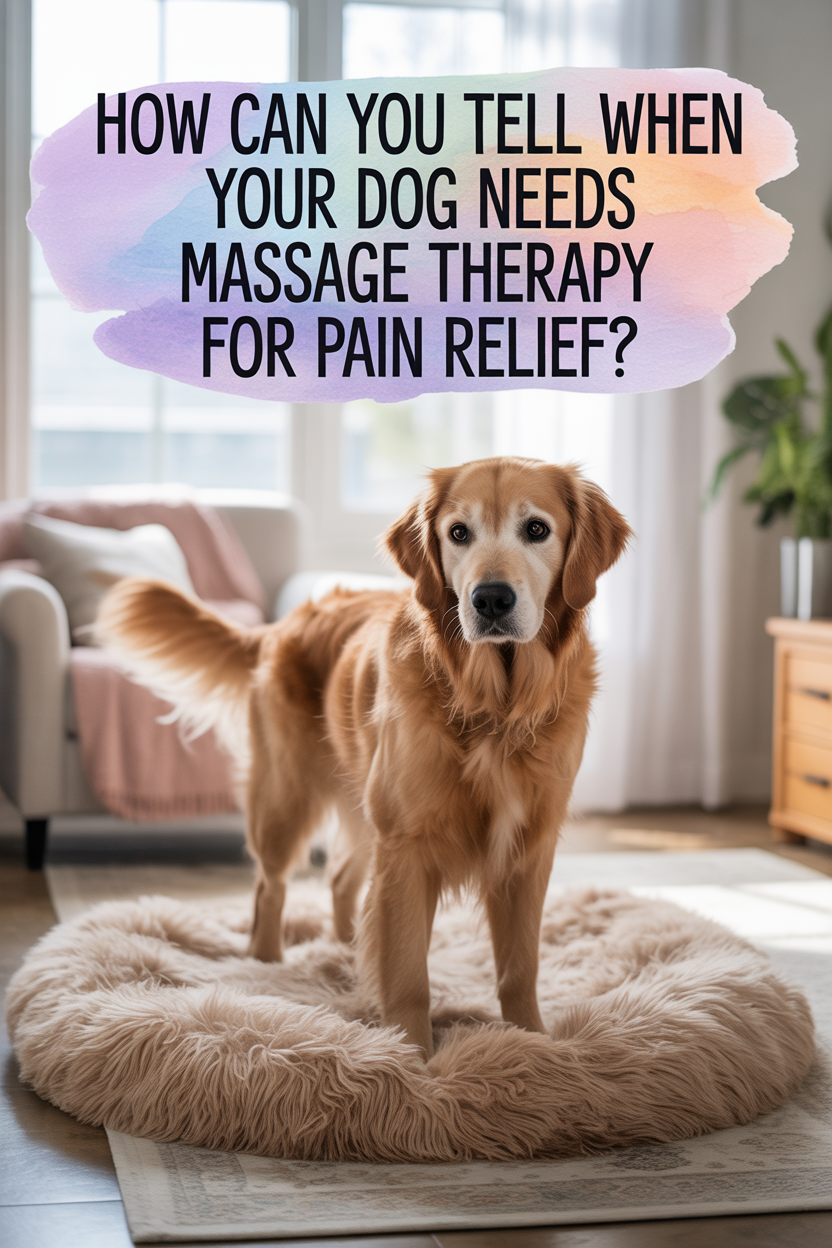
Time to put on your detective hat and become a master observer of your furry friend’s subtle “help me” signals! Recognizing when your dog could use some massage therapy pain relief is like learning a secret language – once you know what to look for, it becomes crystal clear.
When your dog starts bunny-hopping with their back legs or consistently playing favorites with one paw, their joints are basically sending up flare signals that say “attention needed over here!” Excessive licking around knees, elbows, or other joint hot spots is like your dog’s way of saying “this spot is bothering me.”
Dogs who suddenly ghost their favorite activities like fetch or turn into slowpokes during their regular walks might be dealing with muscle stiffness that’s cramping their style. Senior pups who start groaning, whimpering, or looking at their bed like it’s an impossible puzzle when it’s time to lie down are practically begging for therapeutic touch!
Changes in posture, reduced playfulness, or hesitation with movements that used to be as effortless as breathing are all your dog’s way of waving a flag that says “I could really use some professional pain relief intervention here!” Watch for decreased appetite or reluctance to be touched in certain areas.
How Do You Find the Right Qualified Canine Massage Therapist?
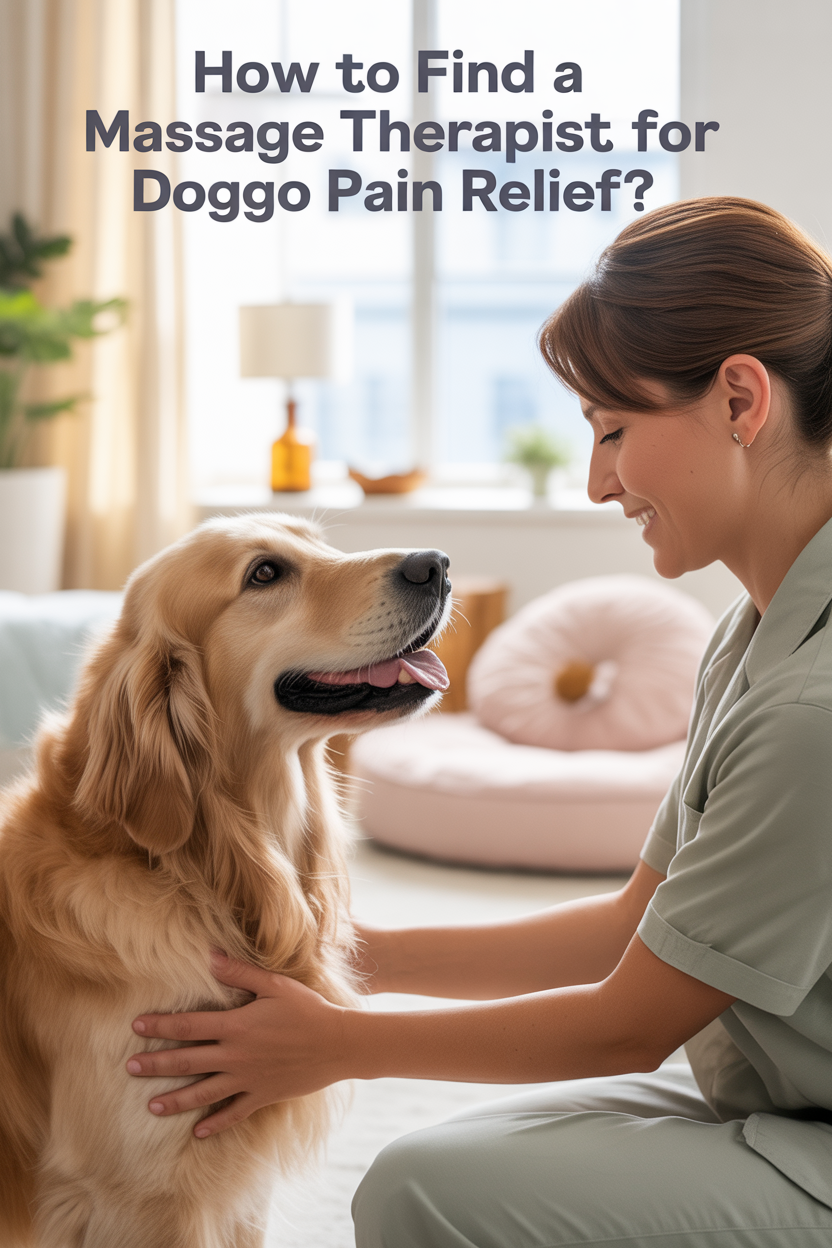
Finding the right canine massage therapist is like finding the perfect puzzle piece for your dog’s pain relief team – when it fits, everything just clicks! Start your search by chatting up veterinarians who specialize in holistic or integrative care because they’re like the ultimate networking pros with trusted professional connections.
Certified canine massage therapists are the real deal – they’ve got specialized training in dog anatomy and know exactly how much pressure is just right for different breeds and conditions. Look for professionals with credentials from recognized organizations like the National Board of Certification for Animal Acupressure and Massage.
During those first meetings, become a dog behavior scientist and watch how your pup responds to the therapist’s approach. If you see excessive panting or stress signals that scream “I’m not comfortable,” that’s your cue that a gentler technique is needed.
Quality therapists are like amazing teachers – they explain their methods clearly and adapt their approach based on your dog’s individual comfort level and specific pain relief needs. Look for professionals who are lifelong learners, constantly updating their skills because your dog deserves someone who’s always improving their game!
How Can You Prepare Your Dog for a Successful Massage Session?
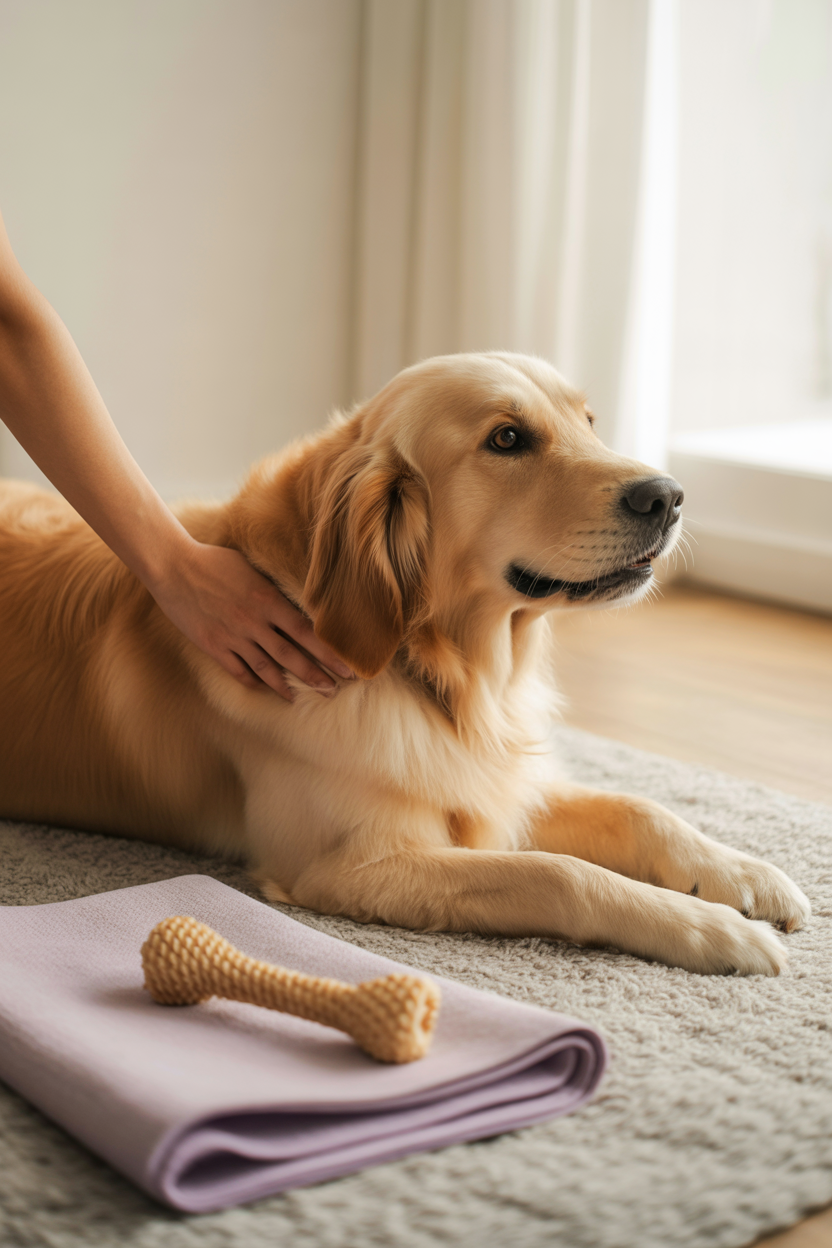
Creating the perfect environment for your dog’s massage session is like setting up a spa day that would make any human jealous! Proper preparation is the secret sauce that transforms a good massage into an absolutely amazing pain relief experience.
Start by turning your space into a zen paradise with lavender-scented sprays on bedding – it’s like aromatherapy that whispers “relax” to nervous pets. Roll out those non-slip yoga mats or towels because nobody wants their dog doing unintentional slip-and-slide moves during therapeutic stretches.
If your dog gets as nervous as a cat at a dog show, start with bite-sized 10-minute sessions and gradually work up to the full 20-30 minute spa experience as they get more comfortable. Choose the quietest room in your house – away from the chaos of television or household noise.
Make sure the room feels like a perfect spring day temperature-wise, and keep fresh water handy because some dogs work up a thirst after their massage sessions. Having their favorite blanket or toy nearby can provide additional comfort during the treatment.
What Are the Essential At-Home Massage Techniques for Dog Owners?

Ready to become your dog’s favorite person (even more than you already are)? Learning basic massage techniques is like adding a superpower to your pet-parenting toolkit that provides ongoing pain relief between professional sessions!
Start with effleurage – those long, gentle strokes down your dog’s back that are basically like giving them a warm hug with your hands while warming up their muscles and promoting instant relaxation. Use smooth, flowing movements that follow the direction of your dog’s fur.
Try using circular thumb movements over their shoulder blades to melt away tension that builds up faster than dirty dishes in the sink, especially in active dogs who think they’re still puppies. Practice gentle leg lifts that stretch hip joints without turning into an unwanted yoga class.
Always become a mind reader for your dog’s comfort level and hit the pause button immediately if they show signs of discomfort, start pulling away, or look more anxious than a dog at bath time. These simple techniques can seriously boost the benefits of professional massage therapy when made part of your regular routine!
Which Body Areas Should You Focus On for Maximum Pain Relief?

Think of your dog’s body like a map where X marks the spots that need the most TLC! Learning canine anatomy is like having insider knowledge that helps you target massage therapy to the areas most likely to cause those “ouch” moments.
Here’s a fun fact that’ll blow your mind: front legs and shoulders are basically the workhorses of the dog world, bearing about 60% of your pup’s body weight – no wonder they need some extra attention! These areas accumulate significant tension from daily activities and weight-bearing stress.
The lower back and hip region are like the complaint department for stiffness, especially in those gentle giants like Labrador Retrievers and German Shepherds who seem to have a genetic predisposition for hip drama. The lumbar spine and surrounding muscles often develop compensatory tension patterns.
Don’t sleep on those paws and toe pads – gentle massage between toes is like giving a foot rub to someone who’s been standing all day, improving circulation to areas that get stiff from all that daily trotting around. Neck and shoulder muscles are tension magnets, especially for dogs who think leash walking is a competitive sport.
How Can You Add Temperature Therapy to Massage for Better Results?
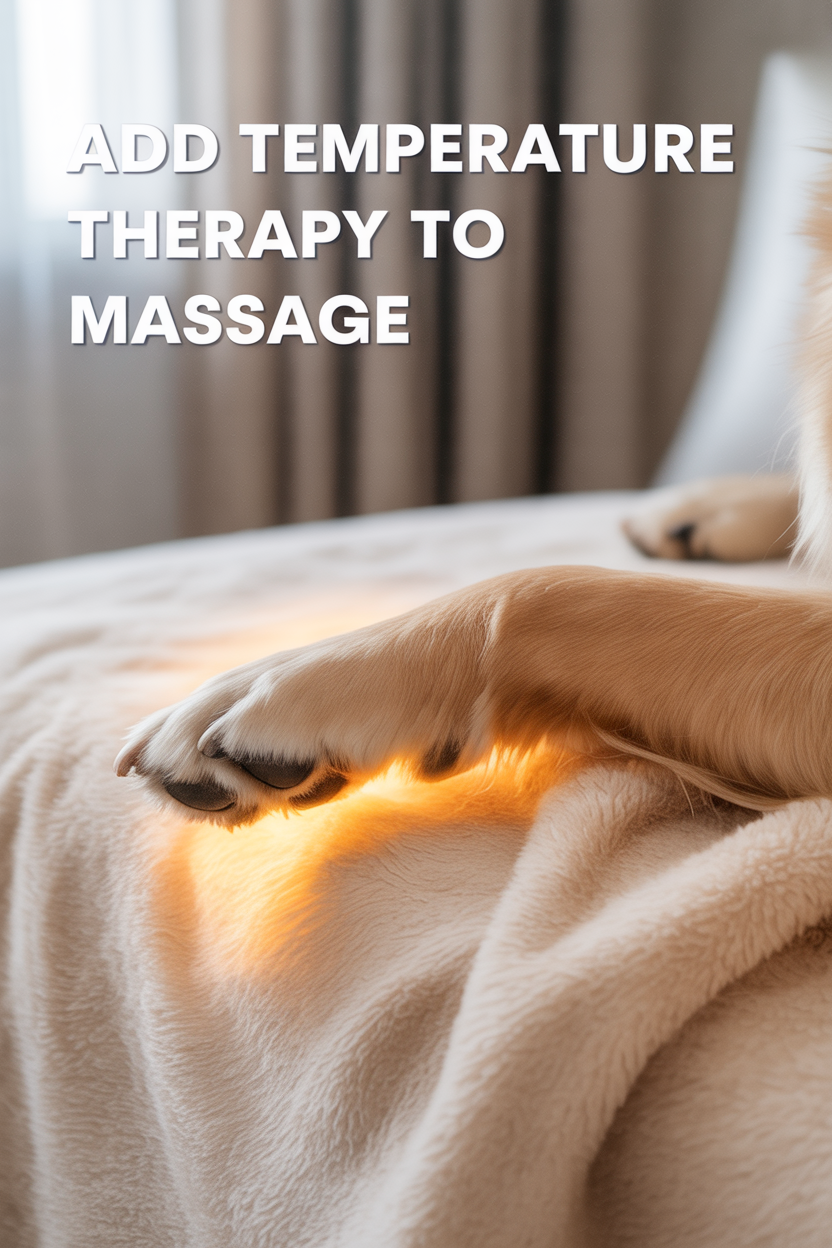
Combining temperature therapy with massage is like assembling the Avengers of pain relief – each member brings something special to the team! Warm towels applied before massage sessions are like a gentle wake-up call to stiff muscles, making therapeutic touch feel as comfortable as sinking into a favorite armchair.
Cold therapy using ice packs wrapped in protective cloth is like having a fire extinguisher for inflammation and swelling after intense zoomie sessions or during those acute flare-ups that come out of nowhere. The cold helps numb pain receptors while reducing inflammatory responses.
Here’s your important safety reminder: become a timer-watching guardian and check your dog’s skin every 2-3 minutes during temperature therapy because burns or frostbite are definitely not invited to this wellness party! Never apply heat or cold directly to your dog’s skin.
Heat therapy is like comfort food for chronic stiffness and long-term joint issues, while cold therapy is the emergency response team for fresh swelling or acute inflammatory drama. These complementary approaches work together like perfect dance partners with massage to create comprehensive pain management.
How Do You Build a Comprehensive Long-Term Pain Management Strategy?

Creating a comprehensive pain management plan is like building a fortress of comfort around your furry best friend – and the results will make both of you do happy dances! Combine weekly professional massage sessions with veterinarian-approved supplements like fish oil or glucosamine to create a wellness routine that would make any health guru proud.
Keep your dog at their ideal weight because extra pounds on arthritic joints are about as welcome as rain on a picnic – your pup’s tender joints will thank you with improved mobility! Weight management significantly reduces stress on already compromised joints and enhances the effectiveness of massage therapy.
Become a progress tracker extraordinaire by noting improvements like more enthusiastic tail wagging during walks, stairs that suddenly become conquerable again, or renewed excitement for favorite activities that had lost their sparkle. Document changes in mobility, energy levels, and overall demeanor.
Here’s the golden rule: consistency is absolutely everything! Regular preventive care through massage therapy is like having a bodyguard that prevents painful flare-ups and keeps mobility in tip-top shape. Consider adding other holistic superheroes like acupuncture, hydrotherapy, or specialized exercise routines to create the ultimate wellness program that supports your dog’s long-term comfort and quality of life.






